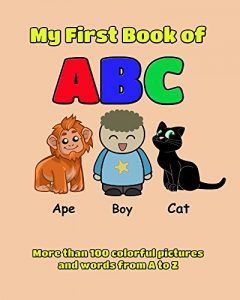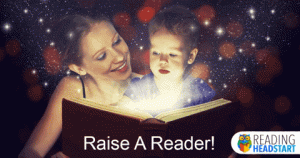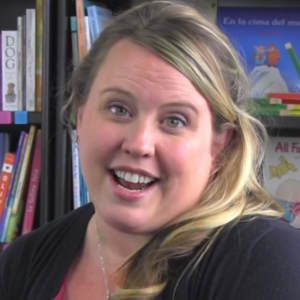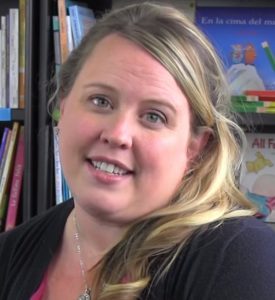Francois Bissonnette's Blog, page 2
August 28, 2018
How to Help Your Child Learn to Read
The ability to read is vital for success. It helps your child succeed in school, helps them build self-confidence, and helps to motivate your child.
Being able to read will help your child learn more about the world, understand directions on signs and posters, allow them to find reading as an entertainment, and help them gather information.
Learning to read is very different from learning to speak, and it does not happen all at once. There is a steady progression in the development of reading ability over time. The best time for children to start learning to read is at a very young age – even before they enter pre-school. Once a child is able to speak, they can begin developing basic reading skills.
Very young children have a natural curiosity to learn about everything, and they are naturally intrigued by the printed texts they see, and are eager to learn about the sounds made by those letters. You will likely notice that your young child likes to look at books and thoroughly enjoys being read to. They will even pretend to behave like a reader by holding books and pretend to read them.
As parents, you’re the most important first step in your children’s journey into the wonderful world of reading. It is up to you to create the most supportive environment that turns your child on to reading – such as reading aloud to them often during the day and before bedtime, and placing age appropriate books for children around the house, so that the child will have access to plenty of books. Reading often to your child will help develop their interest in books and stories, and soon they will want to read stories on their own.
With the help of parents, children can learn how to read. Make reading into a family activity, and spend time playing words games and reading story books. This will not only help you child learn to read, but it’ll also help them build a rich vocabulary, teach them language patterns, and help them fall in love with books and reading.
Below are some tips to help you teach your child to read.
Talk to your child
Before a child can learn to read, he or she must first learn to speak. Talk to your child about everything and anything – whatever interests them. Tell them stories, ask your child lots of questions, play rhyme games, and sing songs with them.
Read to your child consistently everyday
We’re all creatures of habit, and enjoy having a daily routine. Set time aside each day to read to your child. Read to your child every night. Make this their “cool down” period before they go to sleep. This not only helps your child develop an interest in books and reading, it also help the parent bond with the child, and develop a healthy relationship.
Help your child develop reading comprehension
Typically, parents will take the time to read for their children; however, many parents do not put much emphasis or thought on whether their children understands what they’ve just been read to. Instead, occasionally, make an effort to question your child on what you’ve just read. For example, you read to your child:
“Jack and Jill went up the hill…”
You pause briefly and ask your child:
“So where did Jack and Jill go?” Or alternatively, “Who went up the hill?”
Young children may not catch on right away initially, and it may take a little practice, but they’ll eventually catch on and begin to develop a deeper understanding of what they are reading. This is a very important step in helping your child develop reading comprehension. Of course, don’t do this every single time you read, or your child will quickly get bored and lose interest. Do it at random times, and do not over do it.
Help your child to read with a wide variety of books and keep reading fun
There is no shortage of children books, and you should always have a wide variety of children books, stories, and rhymes available. Reading is a lot of fun, for both parents and children. Read to your child using drama and excitement, and use different voices. Give your child the option of choosing what book they want you to read, instead of picking the book you want to read to your child.
When reading to your child, read slowly, and point to the words that you are reading to help the child make a connection between the word your are saying and the word you are reading. Always remember that reading should be a fun and enjoyable activity for your children, and it should never feel like a “chore” for them.
The post How to Help Your Child Learn to Read appeared first on .
3 Tips to Help you Teach your Child to Read
Learning to read at a young age is important for the development of the child. It helps them develop a better understanding of their surroundings, allows them to gather information from printed materials, and provides them with a wonderful source of entertainment when they read stories and rhymes. Children develop at different rates, and some children will develop reading skills quicker than other children; however, what’s important is that as the parent, you are keenly aware of your child’s maturity and reading level to provide them with appropriate books and activities to help them improve.
As parents, you are the most important teacher for your children. You will introduce your child to books and reading. Below we have some tips to help you teach your child to read.
Teach Your Child How to Read Tip #1
Teach your child alphabet letters and sounds at the same time. Studies have shown that children learn best when they are taught the letter names and letter sounds at the same time. In one study, 58 preschool children were randomly assigned to receive instructions in letter names and sounds, letter sound only, or numbers (control group). The results of this study are consistent with past research results in that it found children receiving letter name and sound instruction were most likely to learn the sounds of letters whose names included cues to their sounds. [1]
When teaching your child the letter sounds, have them slowly trace the letter, while saying the sound of the letter at the same time. For example, if you were teaching your child the letter “A”, you would say:
“The letter A makes the /A/ (ah) sound.”
Then have your child say the /A/ sound while tracing the letter with his or her index finger.
Teaching a Child How to Read Tip #2
When teaching your child to read, always emphasize with them that the proper reading order should be from left to right, and top to bottom. To adults, this may seem so basic that anyone should know it. However, our children are not born with the knowledge that printed text should be read from left to right and top to bottom, and this is why you’ll sometimes see children reading from right to left instead – because they were never explicitly taught to read from left to right. When teaching your child how to read, always emphasize this point with them.
Teach Your Child How to Read Tip #3
Teach final consonant blends first. Teaching words such “at” and “and” can lead your child directly to learning words that rhyme with these. For example, for “at”, you can have:
Lat
Pat
Mat
Cat
Sat
Bat
Spat
Chat
For “and”, you can have these rhyming words:
Sand
Band
Land
Hand
Stand
Bland
Brand
Grand
and so on…
You can start teaching blends once your child has learned the sounds of some consonants and short vowel sounds. You don’t need to wait until your child has mastered the sounds of all the letters before teaching blends.
Learning to read is a long process, but it doesn’t have to be a difficult process. Broken down into intuitive and logical steps, a child as young as two years old can learn to read, and older children can accomplish even more.
The post 3 Tips to Help you Teach your Child to Read appeared first on .
April 30, 2018
Elephants and Giraffes: Children Book
Elephants and Giraffes:
Facts, Information and Beautiful Pictures about Elephants and Giraffes (Animal Books for Children) (Volume 4)
Children’s Book Elephants and Giraffes
NEW: Purchase this Book and get access to the VIDEOBOOK for FREE!
Facts, information and beautiful pictures about Elephants and Giraffes
Best for children ages 6 and up!
Good children’s animal book to learn about Elephants and Giraffes.
Buy the children’s book Elephants and Giraffes now!
Children’s Book Elephants and Giraffes
Great Children’s animal Book!
Subscribe to our newsletter to stay up to date with our new posts, new books and promotions.
NameEmail *
December 30, 2017
Betty White Reads Harry the Dirty Dog
Harry the Dirty Dog By Gene Zion. Illustrations by Margaret Bloy Graham. Read by Betty White. Harry is a white dog with black spots who loves everything.. except baths. So one day before bath time, Harry runs away.
I Like to Read (Kids Songs)
I Like to Read
by PlayKids
Reading opens up endless possibilities for kids to learn about the world around them and gives them the power to imagine a world they would like to live in. In this newest addition to the “I Love to Learn” series, PlayKids takes kids of all ages on a reading adventure through the imaginations of their favorite characters including Junior, Kate, Mimi, and Theo! Whether it’s a book about pirates or a story about flying carpets, Junior and friends can’t wait to show your little ones that reading is so much fun!
Breeyn Mack Reading Aloud to Young Children
by Teaching Strategies for Early Childhood Education
Join Breeyn Mack for a read-aloud of “Wash and Dry.” She uses strategies for helping young children to get the most out of the read-aloud experience such as emphasizing vocabulary, commenting on characters, and asking probing questions. Breeyn wraps up the video by reviewing the strategies and giving you tips that you can use right away in your classroom.
We’d love to hear what you think! Feel free to leave us a comment.
August 31, 2017
How to Read with Your Child – Reading Lessons
How to Read with Your Child
Hi. my name is Anne Glass. I’m a reading and learning specialist at a private school in New York City and I work with Kindergarteners through 3rd graders on Reading, Word Study, and Writing Skills. In addition to be a reading specialist and learning specialist, I’m also a parent and today I’m going to talk to you about topics in reading.
Reading with your child is an important time that should occur, almost every single day if possible. For younger children, the best books to read are picture books that you can, start and finish within ten or fifteen minutes, that have, great illustrations that support the narrative structure of the story.
For older children you might be interested in more of a chapter book format, I find that my children love, Beverly Cleary, we’ve been reading the Ramona and Beezus series at home and they absolutely love it. The great thing about reading aloud to your children is that you can access literature that is of interest to your child, but might be beyond an independent reading level. In other words, your child will be ready to hear stories like Treasure Island, way before he can actually read them to himself. So when doing so, read to your child with an animated voice, acting out the characters voices and then also start modeling for him, some of the comprehension skills, that he’ll be responsible for in school and going forward in life. Such as stop and reflect, and say ” oh this book really reminds me of that other book we read” or ” I wonder what that character is going to do and ” this is a real predicament, I wonder how he’ll solve this problem”.
You can generate predictions together about what might happen in the story, and really start talking about the characters and making connections from that text, to your personal life, to the world around you, and also to test that you have shared together prior to that. Reading together is also a wonderful opportunity to spend some time together and bonding. It’s usually more calm time then other periods during the day and that emotional components of learning is always what provides the best reinforcement for a love of reading.
Anne Glass, reading and learning specialist
Subscribe to our newsletter to stay up to date with our new posts, new books and promotions.
NameEmail *
August 22, 2017
Strategies for Reading Aloud to Young Children
Strategies for Reading Aloud to Young Children
Join Breeyn Mack for a read-aloud of “Wash and Dry.”
She uses strategies for helping young children to get the most out of the read-aloud experience such as emphasizing vocabulary, commenting on characters, and asking probing questions.
Breeyn wraps up the video by reviewing the strategies and giving you tips that you can use right away in your classroom.
Breeyn Mack
Content and Community Manager at Teaching Strategies
Subscribe to learn about our free book promotions and new releases.
NameEmail *
New Book

On Amazon
August 2, 2017
Demo Teaching – Skidimarink “I Love You” and The Lion and the Mouse
August 1, 2017
How To Read With Your Child
How To Read With Your Child
1. Show them the cover
Before reading to your child, show them the cover of the book and ask them questions about it. This is a great way to engage their interest and work their imagination.
2. Test your child’s interest and progress
Children can be easily distracted. To keep them focused ask questions such as how they think the characters are feeling? What do they think will happen next? This helps to keep them interested and tests their predictive skills.
3. Check newly acquired skills
Stories contain diversified vocabulary. Whenever new words pop up, make them guess the meaning by using picture clues.
Break down sentences they do not understand and constantly ask simple question.
4. Make it engaging
Children tend to be more attentive when the story comes to life.
They need to differentiate between characters to follow the plot. Using separate voices and nuancing lines is a good trick.
5. Get feedback from your child
At the end of the book ask your child what they enjoyed or disliked about the story and explain why.
Asking these types of questions improves their oral fluency.
It also encourages them to form opinions and gives them the confidence to express their preferences more.
Children’s Books: Animal Stories Book 2
http://www.amazon.com/dp/B00Y58URZQ
Subscribe to our email newsletter.
You’ll hear from us only when we have FREE eBooks promotion, special price discount and new releases.
First name
Email *










